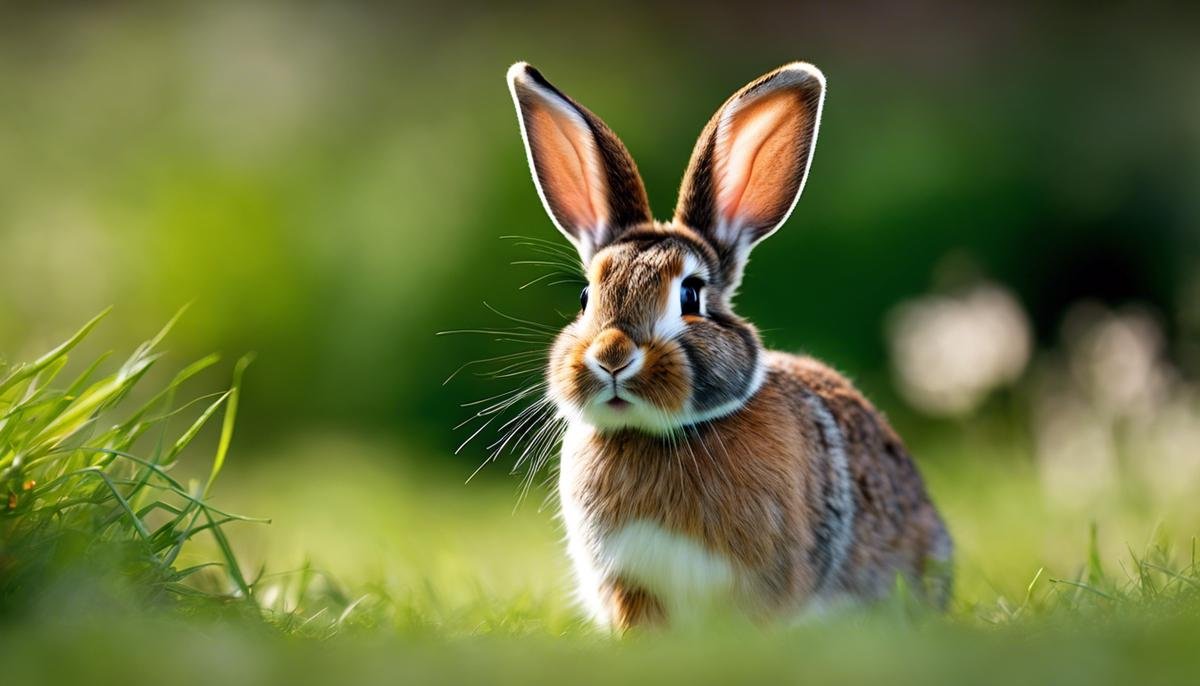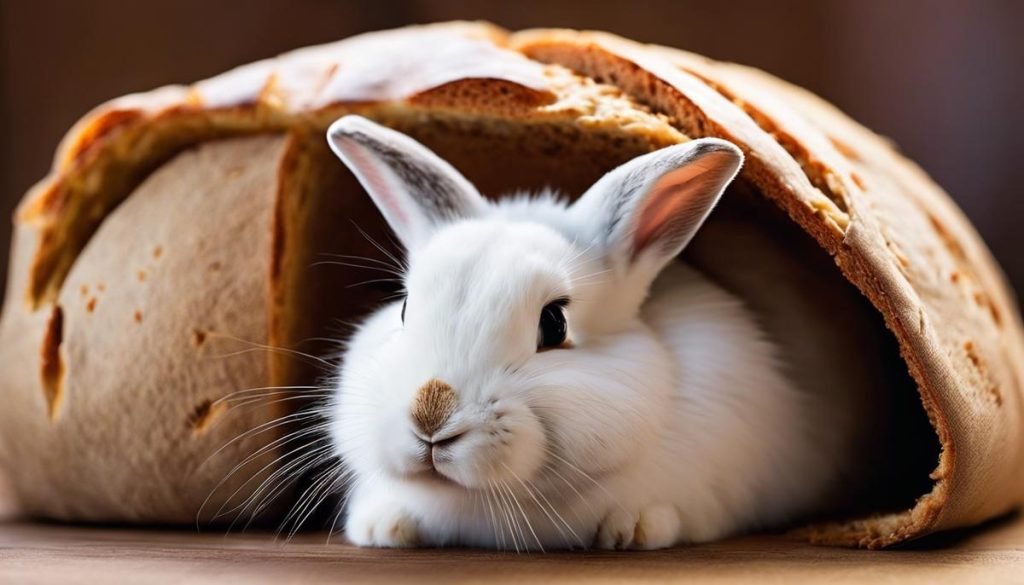Rabbits are renowned for their expressive behavior, charming peculiarities, and silent yet profound methods of communication. While they may not vocalize in a manner that we easily understand, rabbits convey a wealth of information through their body language. As pet owners and animal enthusiasts, deciphering these subtle cues is vital for nurturing a harmonious relationship with our furry companions. In this exploration, we delve into the art of rabbit body language, highlighting the significance of recognizing and interpreting the silent speech of rabbits. By focusing on two key postures – the ‘loaf’ and the ‘hunch’ – we will uncover what our pets may be telling us without uttering a single sound, enhancing our knowledge and fine-tuning our caregiving instincts.
Understanding Rabbit Body Language
Hop Into Understanding: Deciphering Rabbit Body Language
Bunnies! Who doesn’t love those fluffy, hopping bundles of joy? But ever watched your little hopper and wondered what on earth they’re trying to tell you with all those ear twitches and bunny binks? Well, get ready to become a rabbit whisperer, because rabbit body language reveals a lot about their feelings!
First off, let’s chat about those long, adorable ears. Rabbits use their ears like big emotion antennas. If they’re upright and pointed forward, your furry friend is super curious about something, probably sniffing out a new adventure (or treat). On the flip side, if the ears are flattened against their back, watch out – your bunny might be scared or angry.
Ever seen your rabbit freeze and sit completely still? They’re not just practicing their statue impression; they’re likely feeling nervous or sensing danger. Rabbits in the wild do this to blend in with their surroundings and avoid attracting attention from predators. So, if you catch your bunny in mid-freeze, give them a little space to chill out.
Now, for the grand performance – the binky! When your rabbit jumps and twists in the air, sometimes kicking their little feet for good measure, they’re doing the bunny version of a happy dance. This means they’re super-duper happy and have lots of energy to burn. It’s honestly one of the best signs that you’re doing everything right as a rabbit buddy.
Not all binkies are equal, though. If you notice your rabbit flicking its feet after a binky or while running away, they might actually be annoyed or upset. Kind of like saying, “I’m outta here, and I’m not happy about it!”
Rabbits might not cuddle like cats or fetch like dogs, but they sure do nudge. A gentle nudge from a bunny nose can mean your little pal wants your attention or some pets. But if those nudges are more insistent or accompanied by a little nip, your rabbit might be trying to boss you around – yep, they can be quite the little characters!
Another quirky thing rabbits do? Flop. You might catch your bunny toss themselves onto their side. Don’t panic! This isn’t bunny drama; it’s the ultimate sign of relaxation. A rabbit that flops trusts you and feels safe in their environment. It’s like them saying, “Ahh, this is the life!”
Lasty, the tail can tell tales, too. If your rabbit’s tail is up, that usually signals they’re alert or agitated. Combine that with a thumping back foot, and they’re either sending a warning of potential trouble or expressing annoyance.
But remember, just like people, every bunny has its own unique way of expressing itself. The more time you spend with these playful pals, the better you’ll get at understanding their little quirks and nuances.
So, what’s the takeaway from all this bunny body talk? Get to know your rabbit’s individual personality, pay attention to their body language, and you’ll have a hoppy life together! Keep on learning, and your rabbit will surely thank you with more binkies and flops than you can count!

Rabbit Loaf Position
The ‘Loaf’ Position in Rabbits: A Sign of Serenity or Stress?
If you’ve spent any time observing rabbits, you may have noticed that our floppy-eared friends have a peculiar way of sitting that resembles a loaf of bread. This posture, aptly termed the ‘loaf’ position, is a common sight for rabbit enthusiasts and is often a subject of conversation. Let’s hop right into what this endearing pose means in the world of rabbit behavior.
First off, it’s important to notice that when a rabbit settles into the loaf form, its body is tucked in tightly, with the feet hidden under the fur and the ears typically laying back against the body. This shape not only makes for an adorable sight but also tells us a bunch about our bunny’s mood.
When a rabbit is in the loaf position, it suggests they are feeling pretty cozy and secure in their environment. It’s like they have created their own little safe zone. Imagine having a personal retreat where you can just let the world fade away; for rabbits, the loaf position is just that. It’s a way to conserve body heat and feel snug, especially when the temperature drops or the air conditioning is a touch too chilly.
But wait, there’s a flip side to this too. Under different circumstances, the loaf might also indicate that something’s up with your long-eared pal. Occasionally, when rabbits feel under the weather or are experiencing discomfort, they’ll adopt the loaf stance as a way to protect themselves. This is when savvy rabbit lovers need to pay extra attention. If the loaf seems more condensed than usual or is accompanied by an unwillingness to move or eat, it’s time to consult the vet.
In essence, the context is key when interpreting the loaf position in rabbits. It’s the chill mode, a go-to posture for relaxation. But always remember to keep an eye out for any unusual behavior that may signal your bunny isn’t just loafing in comfort but could actually be loafing out of necessity.
To really understand your rabbit’s loafing behavior, take note of what’s going on in their environment and how they react to different situations. Over time, you’ll become fluent in loaf language, and that’s just one more way to ensure your rabbit is hopping happy and healthy!

Rabbit Hunch Posture
When a Rabbit Hunches: Deciphering Behavior and Recognizing Red Flags
As enthusiasts in the fascinating world of rabbit care, we’ve learned that bunnies speak volumes through their posture. But what about when a rabbit isn’t striking the cozy loaf pose and instead is seen hunched over? This stance can be puzzling, and to provide rabbits with the best care, it’s crucial to understand the nuances behind this body language.
A hunched rabbit, sometimes confused with loafing, is actually quite different—it tells a tale all its own. Unlike the safe and snug feelings associated with a loafing rabbit, a hunched posture can signal discomfort or pain. Imagine someone with a tummy ache, curled up to make their belly feel better—that’s what a rabbit might be doing when hunched.
While bunnies are tough creatures, they’re also experts at hiding pain or illness. This instinct is a throwback to their wild ancestors, for whom showing weakness could attract predators. As caretakers, this means we have to be extra observant.
So, when does a hunched posture warrant a closer look or a trip to the vet? Here are some telltale signs to watch out for:
- Duration: If a rabbit maintains a hunched position for an extended period, something’s likely amiss. Rabbits enjoy various positions throughout the day, so a fixed posture is a red flag.
- Activity Level: A rabbit in pain may be less interested in playtime or interactions. If the usual excitement for treats or toys wanes, consider this a sign to be concerned.
- Eating Habits: Appetite changes are a big indicator. If a rabbit skips meals or shows little enthusiasm for favorite snacks, this is a strong signal that the bunny isn’t feeling well.
- Bathroom Breaks: Keep an eye on the litter box. Changes in bathroom habits or droppings can point towards possible discomfort or health issues.
- Breathing and Vocalizations: Rapid breathing, unusual sounds, or any other changes in respiration or vocal behavior are clues that something is off.
- Touch Sensitivity: If a normally sociable rabbit shies away from touch, especially around the belly or back, pain could be the culprit.
Spotting these signs prompts a two-fold approach: first, ensure the rabbit’s environment is stress-free and comfy. This means a clean habitat, a hidey-hole for privacy, access to fresh hay and water, and a steady routine. Secondly, if concern persists, it’s time to consult with a rabbit-savvy veterinarian. They’ll give the expertise and assistance needed, from diagnosing potential issues to providing the care necessary to get that hop back in the step.
Understanding the difference between loafing in bliss and hunching in distress keeps rabbit caretakers one hop ahead in safeguarding their bunny’s health and happiness.

Through this exploration of rabbit body language, we have ventured beyond the silent facade of these complex creatures to reveal the meanings behind their distinctive loafs and hunches. Recognizing these postures empowers us to better gauge the comfort and health of our rabbits, ensuring we meet their needs with empathy and insight. It is our hope that readers will apply this knowledge with a keen eye and a compassionate heart, fostering a deeper bond and a more communicative rapport with their beloved rabbits. By attuning ourselves to the subtle lexicon of lagomorph behavior, we become more than just caretakers – we become understanding companions in the quiet conversations of our fluffy friends.



